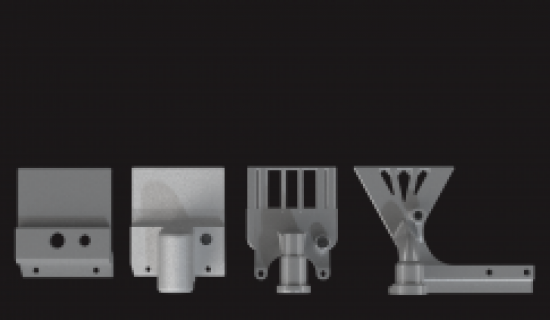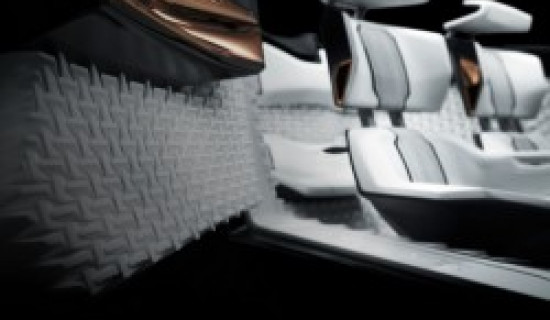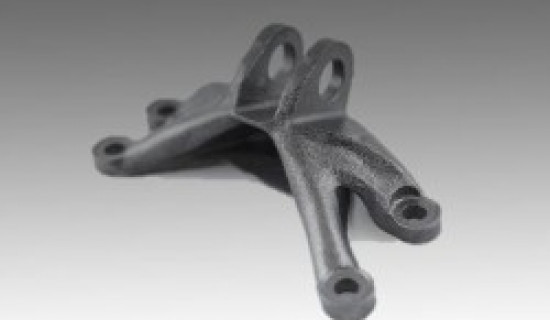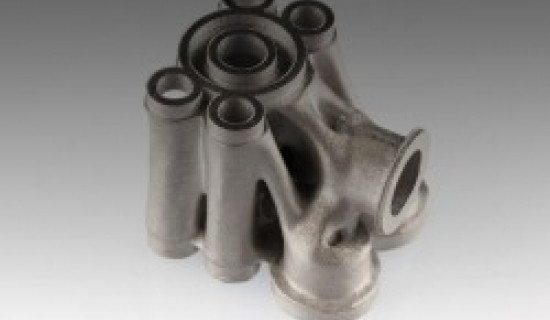Materialise Magics
Support Generation Module for Metal 3D Printing (SG+)
The Role of Software in Metal AM
The Additive Manufacturing of metal parts can be challenging. Today’s market defines the initial learning curve as a two-year period characterized by trial and error experiments, build crashes, vaporized money and time, all mixed in with the occasional correct build. A thorough understanding of how the metal Additive Manufacturing process works is therefore essential.
While it is critical to understand and consider the whole manufacturing process, from powder characteristics to design guidelines and process parameters, including post-processing steps, some of the main stumbling blocks linked to metal Additive Manufacturing are thermal stresses, deformation and shrinkage. How a design engineer positions a part and generates support structures has a huge influence on the success of a build.
Software therefore plays a key role in the metal Additive Manufacturing process. Materialise Magics software, core of our flexible software suite, is based on an in-depth understanding of the mechanisms behind metal AM, guiding you on the issues such as best part orientation and support generation. A number of advanced build validation tools analyze the build risks of a part and its support structures to help detect and avoid issues.
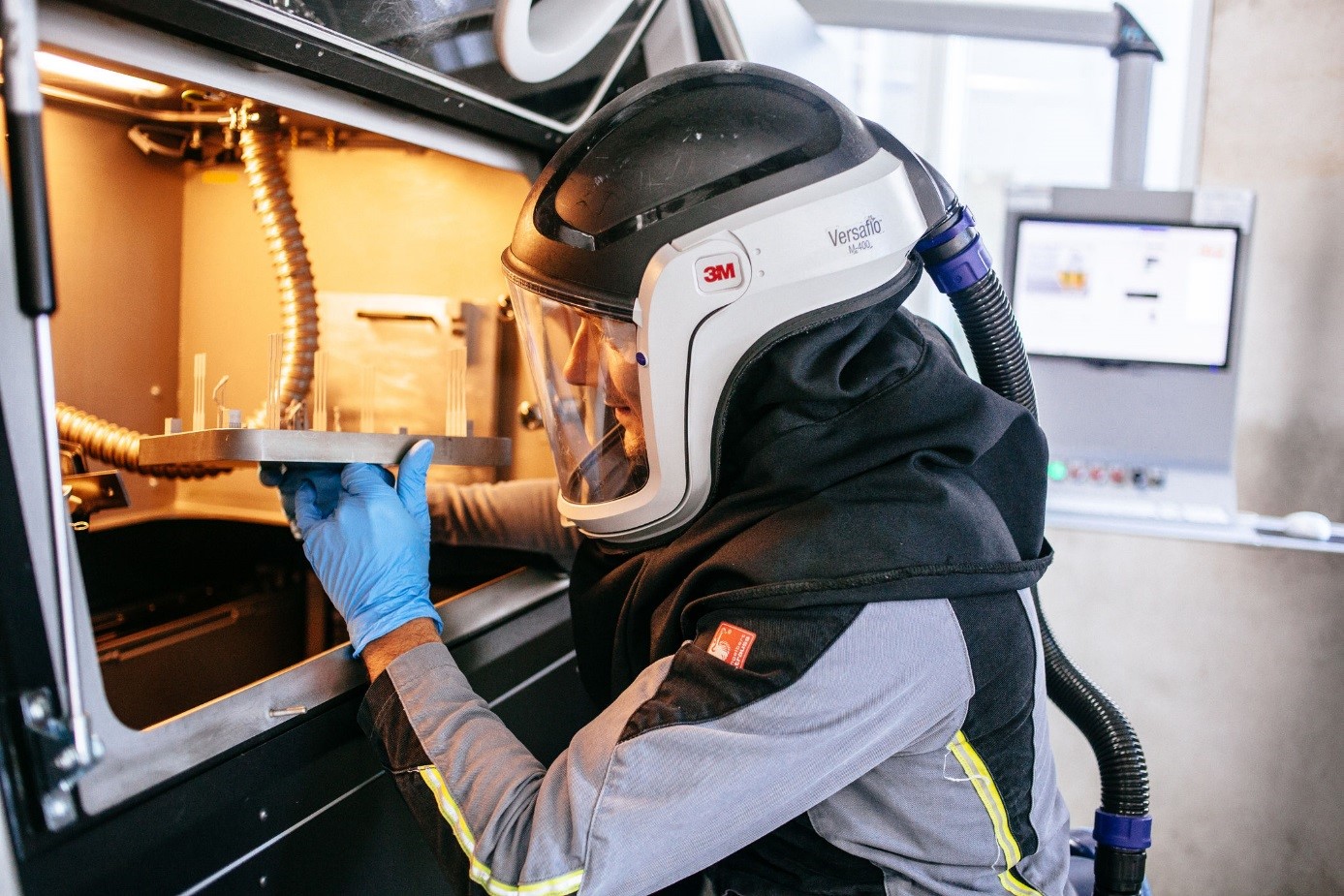
The Right Orientation for Successful Builds
A good part orientation is the first step to a successful build, barring warping or a premature termination of the build process. You can prevent warping by limiting the surface area of each layer and thereby controlling heat build-up. Large differences in temperature between two consecutive layers compromise build quality and can lead to build crashes, so you need a tool that allows them to analyze the surface area for each layer along with the heat distribution within a build.
One of the latest tools in Materialise Magics is the slice distribution graph tailored for metal applications, which gives you total control of the build process. With the slice distribution graph, you can quickly visualize the surface area per slice to improve part and build quality. This can be done for one or more selected parts or for the entire build platform. The tool also takes into account support structures.
For metal Additive Manufacturing production machinery that is equipped with more than one laser, a multi-optics option ensures an evenly distributed workload. You can adjust the orientation of parts or position them in different areas of the build platform and all data can be exported to Excel for a more detailed analysis of the results, helping to achieve an optimal part orientation.
The Magics orientation tools help you orient parts intelligently. This can lead to a reduction of support structures, decreasing material usage and reducing post-processing work. With the Orientation Optimizer tool, for example, you can mark the zones of the part where they do not want to have any support structures. They are then guided to an orientation in which the zones are self-supporting. The Automatic Placement tool makes it easier to position parts by doing some of the work for you.
Depending on your goal, optimal orientation could consist of the right balance between the reduced surface area per layer and the amount of support needed. The support preview tool gives you a preview of how the support structures might look once generated. The preview is updated in real time during the orientation, cutting down the number of orientation iterations.

Screenshot of slice distribution graph
Optimal Support for Every Geometry
In metal Additive Manufacturing, support structures fulfil a greater purpose than simply supporting a part during the build process. Optimal support generation minimizes deformation, prevents build crashes and reduces post-processing work.
There is a wide range of support types, each with its own unique benefits. Depending on the geometry of your part, a specific selection will lead to the best results. For instance, cones and tree supports are particularly interesting for small, thin parts and jewelry.
Materialise Magics provides support structures within a semi-automatic process. You can set custom parameter profiles and easily tweak them afterwards when needed. They can also create their own support structures in CAD and then import them into Materialise Magics.
The Materialise Magics SG+ Module is fascinating software that enables us to print beautiful, high-quality metal parts. The support generated by the software really satisfies our needs.
- Sung Min Kang, Deputy General Manager at Research & Development, Daegun Tech
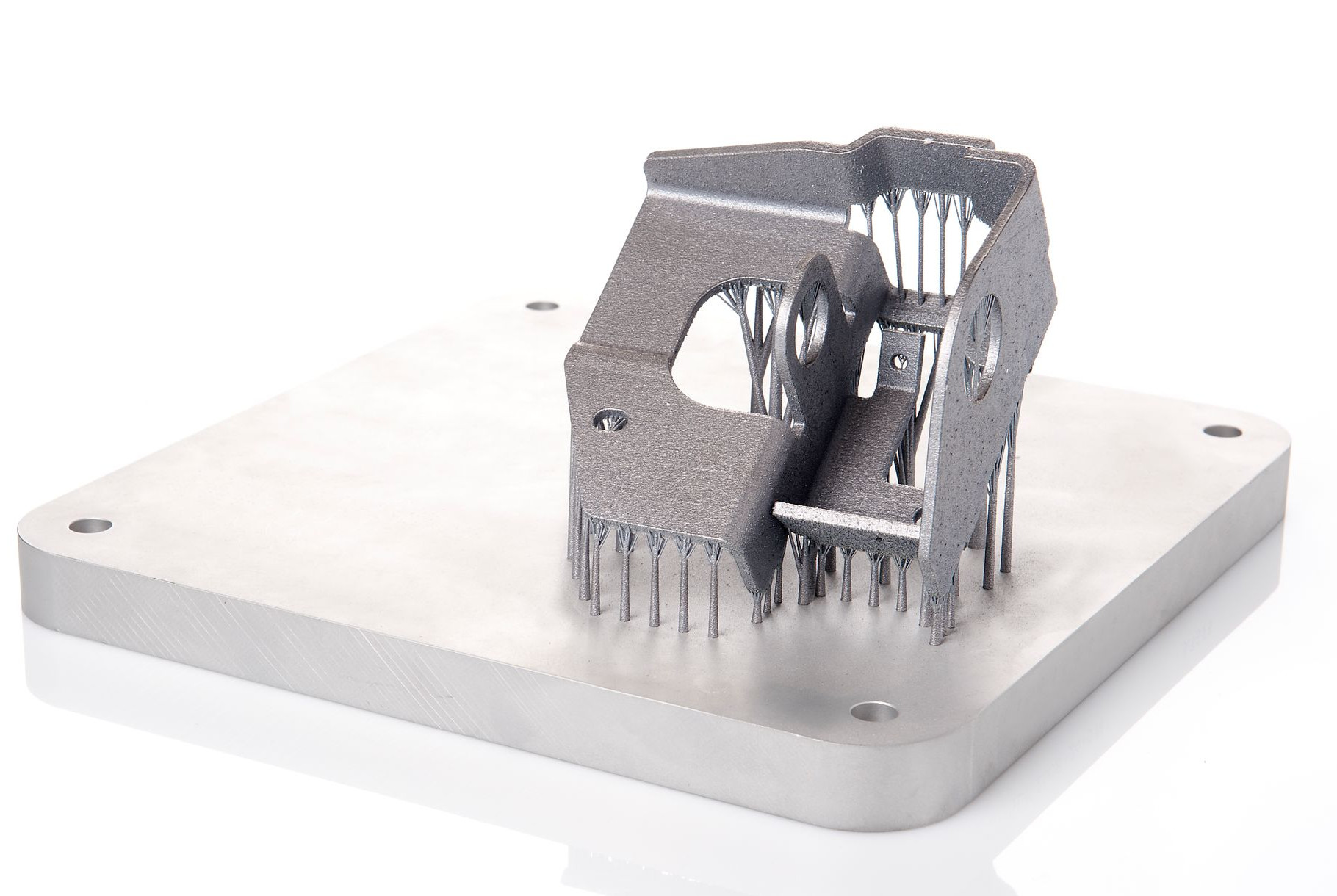
An example of the use of tree support structures
Manage heat and avoid deformation
To more effectively conduct the heat from the part to the build platform, Magics allows the use of volumetric support elements. These elements also make sure deformation is avoided by anchoring the part firmly to the build plate. With the software library, you can thicken specific supports as well as choose between solid volume, blocks, cones, tree support structures and more.
Block support structures look like a grid of lines, with each line normally assuming the thickness of the melt pool. You can thicken the borders of the grid to conduct the heat more effectively and avoid warping.
Strategies for improving part stability
A powder-bed machine’s recoater system can have a significant impact on the part and its support structure during the build process, which might result in the part shifting. In addition, a deformed part’s edges may protrude over the powder bed, which can potentially lead to a collision that could damage the part and/or the recoater mechanism. A strong connection to the platform is therefore imperative.
With the rescaled platform projection area tool, you can expand support structures and strengthen the connection with the platform. The teeth size, shape, penetration level and other parameters also influence the strength of the support structures. For instance, a cylindrical platform connection can reduce build failures by offering a stronger connec¬tion to the build platform.
Remove Support Easily while Maintaining Surface Quality
In cases where support structures have to be removed manually, easy support removal and smart support placement technology can significantly reduce finishing time.
Materialise offers fully and semi-automated support generation software for Metal AM. Those who favor manual control can opt for the SG+ module in Magics. If you want to save time on support generation and remove support structures with even greater ease, we recommended our fully automated software: Materialise e-Stage for Metal.
Smart support placement
If support structures normally touch a part in two different areas, for instance inside a tube, you can work with angled support structures. With these structures, you can manually guide the support structures from their part to the build platform, avoiding unnecessary contact points.
If the connection with an area of a part cannot be avoided, you can guide the support structures to an area that is easier to process such as a flat surface rather than a curved one. With the rescaled platform projection tool, you can also downsize the width of support structures to limit the area that requires post-processing.
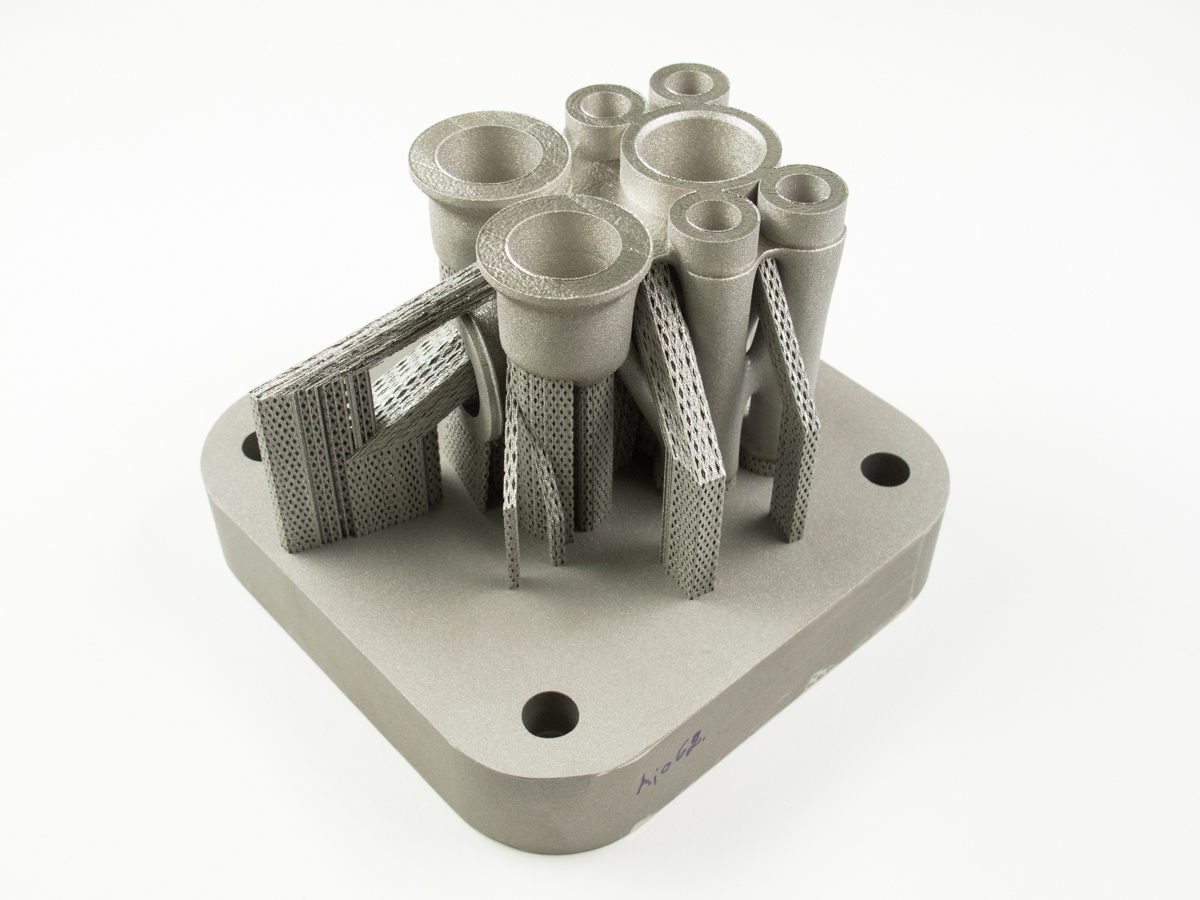
This hydraulic valve by VTT and Nurmi Cylinders was anchored with angled support structures
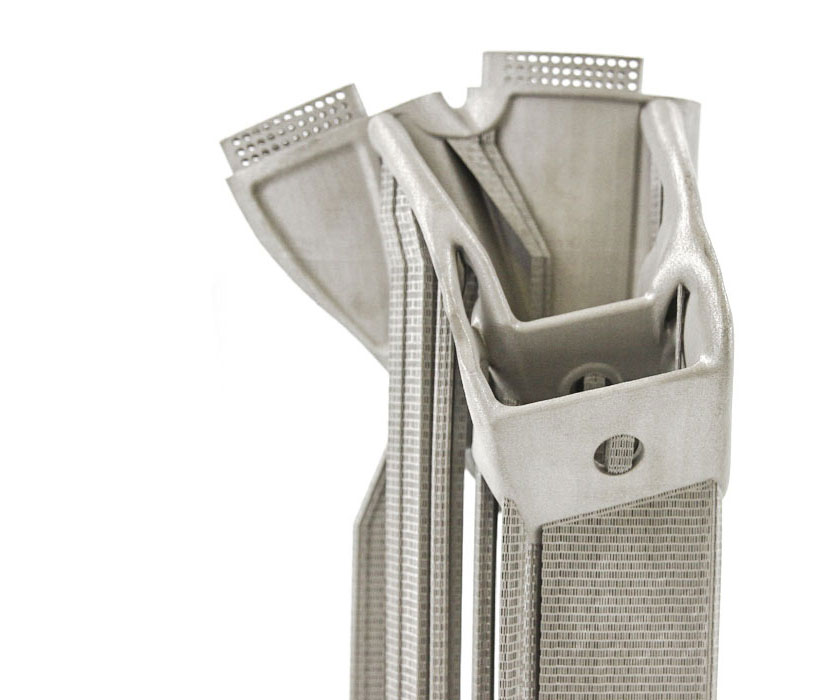
This automotive part is supported by block support structures. Block support, as opposed to valumetric support, is not completely solid
Easy support removal
Solid support structures can be combined with fine teeth that are strong but easy to remove, or they can select predefined break-off points. The latter have the form of an hour glass and will break off in the middle. This avoids the pitting that can result from poor support removal and damaging the part. You can then smoothen the surface. Fragmented block supports or a clearance between the support structures also facilitate support removal.
Another way to remove support structures without compromising surface quality is by adding some additional material at the places that need the support structures. These can then be milled to obtain the intended final shape, a feature in Magics calls milling offset.
Recuperating valuable powder
As AM grade metal powder can be very expensive it is preferable to recycle as much of the powder as possible. For safety and contamination reasons it is also best to remove as much powder as possible in a controlled atmosphere before removing the support. With perforations and fragmentations of surface support, Magics can ensure the recuperation of powder while preserving the strength of supports. Designers can also hollow solid supports or place a structure inside them to reduce build time.Optimal Machine Parameters Save Time and Reduce Component Stress
In addition to data preparation software, machine communication software also influences the quality and success of metal additively manufactured parts. Build Processors can also assign different scanning strategies to different types of support structures. For instance, support structures can be scanned every two layers, speeding up the scanning process and reducing stress.
With Materialise’s Build Processor, Control Platform and Inspector software, you can fully control the metal Additive Manufacturing process. They can inspect the build process strategy, monitor and log data in real time and save valuable time and material with a root cause analysis of failed builds. The goal is predicting and detecting errors with less effort and increasing overall confidence in the quality of the finished metal parts.
Read inspiring stories and applications on how to use this module:
Experience the benefits of optimal metal support structures!

